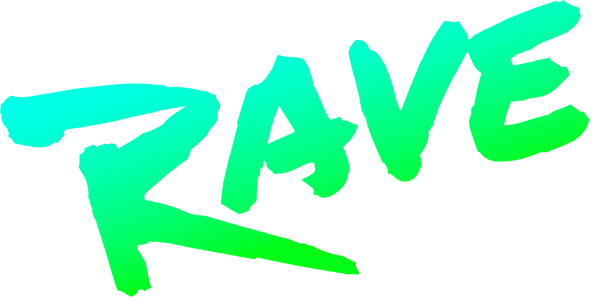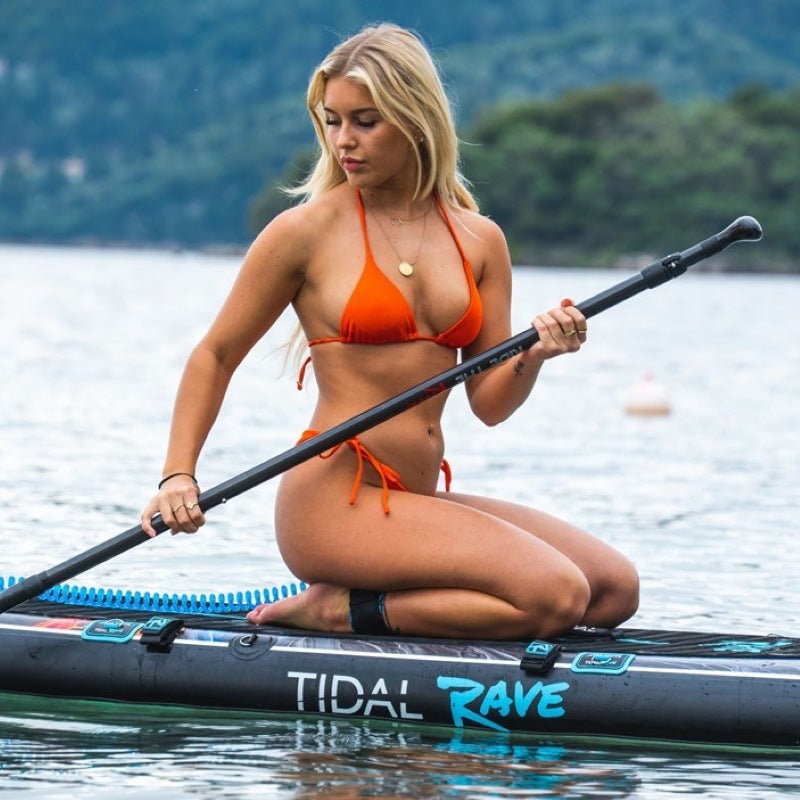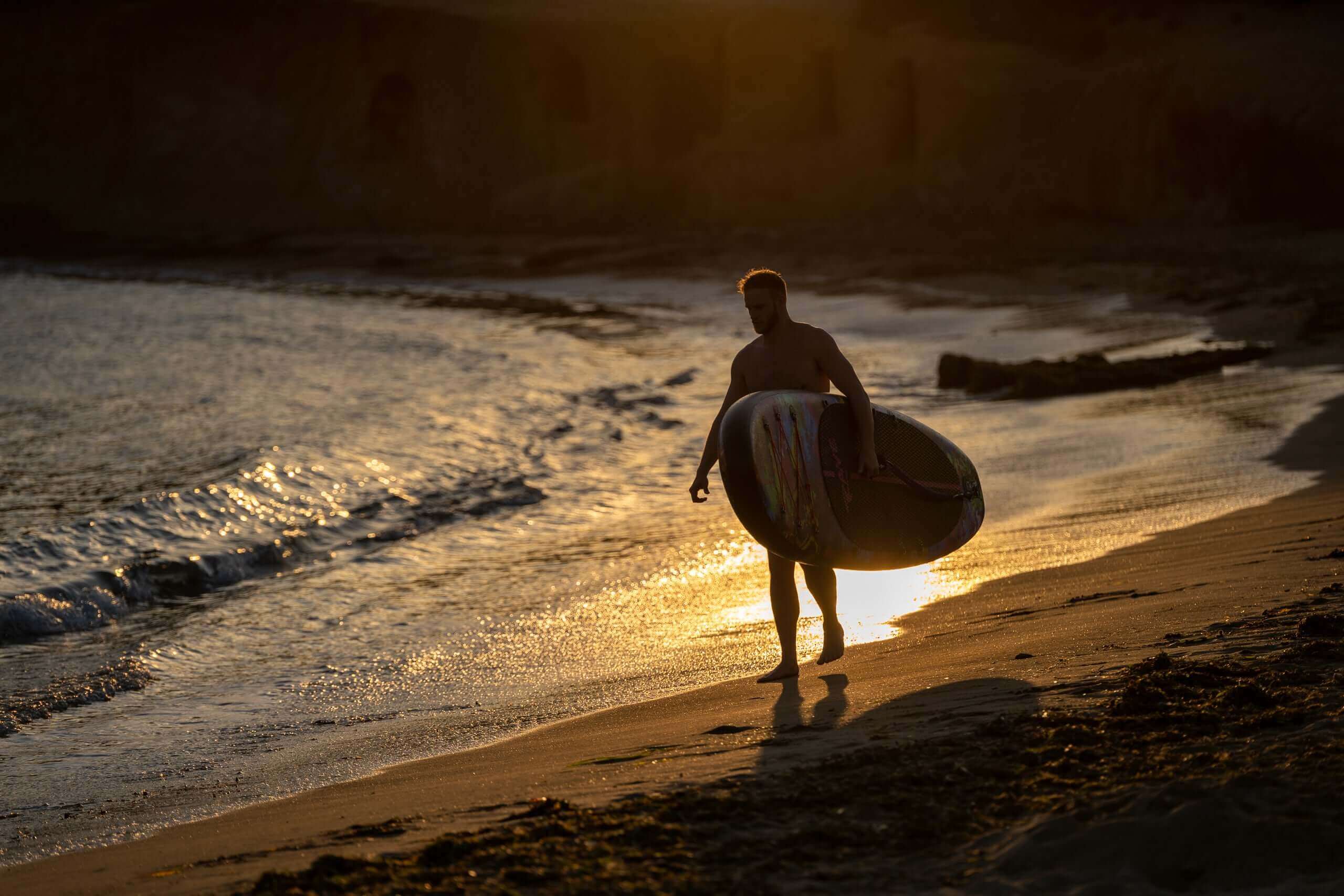Although paddle boarding is not a new sport historically, it’s new in the sense of popularity and availability. This leaves many people asking, what is paddle boarding?
And I find that plenty of people only have a grasp of the basics in that you have a paddle… and a board… and go on the water! I want to change that and enlighten you on the epic sport of paddle boarding and this starts with the below beginner guide - enjoy!
Paddle Boarding Definition
“A sport in which you travel across water or ride waves using a board, which you can sit or stand on, and sometimes paddle”
That’s the Cambridge Dictionary definition and it does a pretty decent job of answering the question, what is paddle boarding? It’s a little boring though, isn’t it?
Yes, paddle boarding is a sport where you traverse waterways on a board using a paddle… but it’s so much more than that! Paddle boarding is adventure, it’s excitement, it’s exploring the world from a different perspective.
One day you could be traversing the miles of waterways in the Norfolk Broads, the next you could be paddle boarding on the immense Lake Windemere in the Lake District, or you could be probing the rugged Cornish coastline looking for a sandy beach to crash on.
That’s paddle boarding!
If you want to try a different sporting activity, enjoy time outdoors, and stay fit, I urge you to give paddle boarding a try. It’s not only fun, but it offers the following benefits too:
- It can be done with friends
- It’s generally easier to learn than surfing
- There are so many different locations to explore
- It gives you a full-body workout
- Once you have bought your gear, it’s incredibly cheap
So, what is paddle boarding? It’s a fun watersport that anyone can get involved in and its popularity continues to increase in the UK.
Essential Paddle Boarding Equipment
When looking at what is paddle boarding, we can’t ignore the required gear. To get started, you need a variety of equipment but the bare minimum is a paddle board, a paddle, and a leash. That being said, it would be irresponsible of me to only recommend those three items, and I instead think the following makes for a great starter kit:
- Paddle board
- Paddle
- Leash
- Wetsuit
- Drysuit
- Personal Flotation Device
Your paddle board is the centrepiece of your equipment. This is your plank of stability and your means of traversing the epic waterways of the UK. Paddle boards come in various sizes and designs and you can get both solid boards and inflatable varieties. Make sure to check out our selection of boards for inspiration.
While you can paddle with your arms hanging over the side, I recommend using an actual paddle instead! It makes the experience much easier. Paddles are typically available in either half or full-length models.
These are the two main pieces of gear, but you need some bits and bobs too to keep you comfortable and safe. A leash allows you to attach your ankle to the board while a PFD is essential in the case of an emergency. Lastly, I recommend investing in a wetsuit and drysuit plus a hood, boots, and mittens, so you can paddle board in any weather the UK throws at us!
Where Can I Paddle Board?
The UK has some incredible paddle board locations and we are blessed with so many epic places to explore. Whether you’re taking to the waters in the Lake District, or exploring the gorgeous Cornish coastline.
Essentially, you can paddle board on any waterway including:
- Lakes
- Rivers
- Coastal Waters
- Canals
However, always be courteous and be aware if lakes are privately owned. Additionally, for some waterways, you need a waterways license to legally paddle board on them (this is mainly for canals). It’s worth checking out the British Canoeing site as they have an annual pass that includes a waterways license.
How do I Stay Safe When Paddle Boarding?
As with any water sport, safety is important for paddle boarding and while we don’t like talking about it, there is the possibility of drowning and hypothermia. That being said, this will never happen provided you stay safe and do the following:
- Check weather conditions beforehand including air and water temperatures
- Let someone know where you are paddle boarding
- Don’t go without a Personal Flotation Device
- Wear appropriate clothing for the seasons
- Know your limits and always have an idea where the closest shoreline is
Checking the weather conditions is key as this allows you to dress appropriately such as wearing a 5mm wetsuit when the water is cold.
I know that having a PFD may seem like an annoyance too, but don’t paddle board without one - It could save your life one day. Lastly, while exploring is part of what makes paddle boarding great, you should still stay alert and be aware of your surroundings at all times.
Frequently Asked Questions
Is paddle boarding difficult?
Paddle boarding offers a more gentle learning curve compared to surfing. Once you have mastered climbing onto your board and how to balance, the paddle strokes will come naturally and most people can learn the basics in a day!
What is the point of paddle boarding?
I see this question a lot and it makes me think, what is the point of anything? Paddle boarding offers many opportunities. You can use it for exercise and to keep fit. Some people enjoy paddle board fishing. Others do paddle board touring and explore long stretches of rivers. What is paddle boarding? It’s freedom, excitement, and endless possibilities.
Will I get wet paddle boarding?
Possibly! Obviously, you have to climb onto your board which can be from the shore or the side of a canal for example, but you may have to get in the water to get on. Also, there’s always the possibility of losing your balance and toppling in, but that’s part of the fun right?
Paddle Boarding is What You Make of It
I hope you now have a clear understanding of the sport and a firm answer to, what is paddle boarding. While it is a water sport that involves using a board and a paddle to travel on water, paddle boarding is also what you make of it. It’s incredibly versatile and I wholeheartedly believe that anyone can jump in and give it a try.




